 Bài Đọc I: Nehemia 8:2-4,5-6,8-10 II: 1Cor 12:12-30
Bài Đọc I: Nehemia 8:2-4,5-6,8-10 II: 1Cor 12:12-30Phúc Âm Luca 1:1-4,4:14-21
(1) Thưa ngài Thêôphilô đáng kính, có nhiều người đã ra công biên soạn bản tường thuật những điều đã được thực hiện giữa chúng ta. (2) Họ viết theo những điều mà các người đã được chứng kiến ngay từ đầu và đã phục vụ lời Chúa truyền lại cho chúng ta. (3) Tôi cũng vậy, sau khi đã cẩn thận tra cứu đầu đuôi mọi sự, thì thiết tưởng cũng nên tuần tự viết ra để kính tặng ngài, mong ngài sẽ nhận thức được rằng giáo huấn ngài đã học hỏi thật là vững chắc. (4:14) Được quyền năng Thần Khí thúc đẩy, Đức Giêsu trở về miền Galilê, và tiếng tăm Người đồn ra khắp vùng lân cận. (15) Người giảng dạy trong các hội đường của họ, và được mọi người tôn vinh. (16) Rồi Đức Giêsu đến Nadarét, là nơi Người sinh trưởng. Người vào hội đường như Người vẫn quen làm trong ngày sabát, và đứng lên đọc Sách Thánh. (17) Họ trao cho Người cuốn sách ngôn sứ Isaia. Người mở ra, gặp đoạn chép rằng: (18) Thần Khí Chúa ngự trên tôi, vì Chúa đã xức dầu tấn phong tôi, để tôi loan báo Tin Mừng cho kẻ nghèo hèn. Người đã sai tôi đi công bố cho kẻ bị giam cầm biết họ được tha, cho người mù biết họ được sáng mắt, trả lại tự do cho người bị áp bức, (19) công bố một năm hồng ân của Chúa. (20) Đức Giêsu cuộn sách lại, trả cho người giúp việc hội đường, rồi ngồi xuống. Ai nấy trong hội đường đều chăm chú nhìn Người. (21) Người bắt đầu nói với họ: "Hôm nay đã ứng nghiệm lời Kinh Thánh quý vị vừa nghe".
Chi Tiết Hay
+ (c. 14) Thánh Luca dùng câu "được quyền năng Thần Khí thúc đẩy" để giúp người đọc hiểu rằng đoạn tiên tri Isaiah trong câu 18 ám chỉ chính Đức Giêsu (Thần Khí Chúa ngự trên tôị..)
+ (c. 15) Hôị đường là trung tâm sinh hoạt tôn giáo của người Do Thái. Luật thời đó chép rằng nơi nào có mười gia đình Do Thái trở lên thì phải có một hội đường. Nghi thức tôn giáo tại hội đường thường có ba phần:
a. Dâng lời cầu nguyện.
b. Một vài giáo dân đứng lên đọc các đoạn Kinh Thánh. Có lẽ Đức Giêsu đã được chọn trước để đọc đoạn Kinh Thánh trong ngày đó.
c. Phần giảng dạy do một người thông thạo Kinh Thánh trình bày, và sau đó là bàn luận.
+ (c.18) Đức Giêsu dùng đoạn Isaia để nói vềcông cuộc cứu độ của Ngài. Đoạn trích dẫn này được viết theo lối hành văn thời đó:
a. loan báo Tin Mừng cho kẻ nghèo
b. kẻ giam cầm được tha
c. người mù được sáng mắt
b'. trả tự do cho người bị áp bức
a'. công bố năm hồng ân của Chúa
Trong lối hành văn cổ này người đọc thấy câu a và a' giống nhau, câu b và b' giống nhau. Nhờ đó câu c được làm nổi bật lên thành điểm chính trong năm câu.
+ (c.19) Cứ cách 50 năm, người Do Thái tổ chức 1 năm hồng ân. Trong năm này, các nô lệ được thả, và các món nợ được tha. Những người nghèo khổ đều trông chờ năm hồng ân này. Đức Giêsu đến , mang ý nghĩa mới cho năm hồng ân: tha thứ và cứu thoát con người khỏi xiềng xích của tội lỗi.
+ (c. 20) Đọc xong Đức Giêsu ngồi xuống. Người đọc có cảm tưởng là Ngài đã làm xong việc. Thực ra, lúc đó Đức Giêsu mới khởi sự bài giảng. Những người giảng dạy (thí dụ như các rabbi) thường ngồi xuống trước khi bắt đầu giảng.
Một Điểm Chính: Thiên Chúa luôn trung thành với dân Ngài. Ngài đã hứa sẽ cứu thoát, và mang ánh sáng hiểu biết đến để mở mắt cho chúng ta là những kẻ mù lòa. Lời hứa đó đã được Đức Giêsu thực hiện.
Suy Niệm
1. Đối với tôi, thế nào là tự do? Trong tôn giáo của tôi, tôi đang tự do , hay đang bị giam cầm như thế nào?
2. Thế nào là mù lòa? Tôi nhắm mắt vài phút và thử xem tôi có thể nhớ rõ các màu sắc quanh tôi, những khuôn mặt thân quen? Tôi xin Chúa Giêsu chữa những mù lòa của tâm hồn tôi, xin cho tôi được ánh sáng và hiểu biết mới.
-----------------------------------------------
3rd Sunday in Ordinary Time
3rd Sunday in Ordinary Time
Reading I: Nehemia 8:2-4,5-6,8-10 II: 1Cor 12:12-30
Gospel Luke 1:1-4,4:14-21
(1) Inasmuch as many have undertaken to compile a narrative of the things which have been accomplished among us, (2) just as they were delivered to us by those who from the beginning were eyewitnesses and ministers of the word, (3) it seemed good to me also, having followed all things closely for some time past, to write an orderly account for you, most excellent The-oph'ilus,4 that you may know the truth concerning the things of which you have been informed. (4:14) And Jesus returned in the power of the Spirit into Galilee, and a report concerning him went out through all the surrounding country. (15) And he taught in their synagogues, being glorified by all. (16) And he came to Nazareth, where he had been brought up; and he went to the synagogue, as his custom was, on the sabbath day. And he stood up to read; (17) and there was given to him the book of the prophet Isaiah. He opened the book and found the place where it was written, (18) "The Spirit of the Lord is upon me, because he has anointed me to preach good news to the poor. He has sent me to proclaim release to the captives and recovering of sight to the blind, to set at liberty those who are oppressed, (19) to proclaim the acceptable year of the Lord." (20) And he closed the book, and gave it back to the attendant, and sat down; and the eyes of all in the synagogue were fixed on him. (21) And he began to say to them, "Today this scripture has been fulfilled in your hearing."
Interesting Details
+ (v.14) "in the power of the Spirit". Luke prepares his readers to appreciate that the passage from Isaiah in verse 18 applies to Jesus ("The Spirit of the Lord is upon me...").
+ (v.15) The synagogue was the real center of religious life in Israel. The law at that time was that wherever there were ten Jewish families there must be a synagogue. The synagogue service has three parts:
a. The worship part, where a prayer is offered.
b. The readings of the scriptures by members of the congregation. It is likely that Jesus' reading is by pre-arrangement.
c. The teaching part, whereby a distinguished person in the congregation is invited to speak, followed by a discussion.
+ (v. 18) Jesus is the Spirit-bearer foretold in this Isaiah passage. The goal of his ministry is spelled out here. Luke arranges the verses in a pattern commonly found in ancient literature:
a. good news to the poor
b. release to the captives
c. sight to the blind
b'. freedom to the oppressed
a'. proclaim year of the Lord's favor
This concentric arrangement helps the reader see that lines a and a' are similar, b and b' are similar. Line c stands out as the focus of the verses.
+ (v. 19) In ancient Jewish tradition, at an interval of every fifty years, a "jubilee" year was celebrated where all debts are forgiven and slaves regain their freedom. For obvious reasons, the poor look toward this jubilee year with much hope. Jesus brings new meanings to the jubilee year: freedom from and forgiveness of sins.
+ (v. 20) Jesus sits down. This gives the readers the impression that he is finished. Actually he is about to start. The speaker usually gives his address while seated.
+ (v. 21) "Today this scripture has been fulfilled". The word "today" should not be taken to mean "at the time of Jesus". It refers to the present time of fulfillment of God's promise.
One Main Point: God is ever faithful to his people. In Jesus he fulfills his promise: to set us free, to bring awareness to our unenlightened (and thus blind) state.
Reflections
1. What does the word "freedom" mean to me? As a Christian, how am I free or not free?
2. I close my eyes to 'see' what blindness is like. I attempt to remember the colors around me, to remember the faces of people I know. As Jesus has restored the sight of the blind, I ask Jesus to restore the sight of my soul, to give me new understanding and awareness.
Gospel Luke 1:1-4,4:14-21
(1) Inasmuch as many have undertaken to compile a narrative of the things which have been accomplished among us, (2) just as they were delivered to us by those who from the beginning were eyewitnesses and ministers of the word, (3) it seemed good to me also, having followed all things closely for some time past, to write an orderly account for you, most excellent The-oph'ilus,4 that you may know the truth concerning the things of which you have been informed. (4:14) And Jesus returned in the power of the Spirit into Galilee, and a report concerning him went out through all the surrounding country. (15) And he taught in their synagogues, being glorified by all. (16) And he came to Nazareth, where he had been brought up; and he went to the synagogue, as his custom was, on the sabbath day. And he stood up to read; (17) and there was given to him the book of the prophet Isaiah. He opened the book and found the place where it was written, (18) "The Spirit of the Lord is upon me, because he has anointed me to preach good news to the poor. He has sent me to proclaim release to the captives and recovering of sight to the blind, to set at liberty those who are oppressed, (19) to proclaim the acceptable year of the Lord." (20) And he closed the book, and gave it back to the attendant, and sat down; and the eyes of all in the synagogue were fixed on him. (21) And he began to say to them, "Today this scripture has been fulfilled in your hearing."
Interesting Details
+ (v.14) "in the power of the Spirit". Luke prepares his readers to appreciate that the passage from Isaiah in verse 18 applies to Jesus ("The Spirit of the Lord is upon me...").
+ (v.15) The synagogue was the real center of religious life in Israel. The law at that time was that wherever there were ten Jewish families there must be a synagogue. The synagogue service has three parts:
a. The worship part, where a prayer is offered.
b. The readings of the scriptures by members of the congregation. It is likely that Jesus' reading is by pre-arrangement.
c. The teaching part, whereby a distinguished person in the congregation is invited to speak, followed by a discussion.
+ (v. 18) Jesus is the Spirit-bearer foretold in this Isaiah passage. The goal of his ministry is spelled out here. Luke arranges the verses in a pattern commonly found in ancient literature:
a. good news to the poor
b. release to the captives
c. sight to the blind
b'. freedom to the oppressed
a'. proclaim year of the Lord's favor
This concentric arrangement helps the reader see that lines a and a' are similar, b and b' are similar. Line c stands out as the focus of the verses.
+ (v. 19) In ancient Jewish tradition, at an interval of every fifty years, a "jubilee" year was celebrated where all debts are forgiven and slaves regain their freedom. For obvious reasons, the poor look toward this jubilee year with much hope. Jesus brings new meanings to the jubilee year: freedom from and forgiveness of sins.
+ (v. 20) Jesus sits down. This gives the readers the impression that he is finished. Actually he is about to start. The speaker usually gives his address while seated.
+ (v. 21) "Today this scripture has been fulfilled". The word "today" should not be taken to mean "at the time of Jesus". It refers to the present time of fulfillment of God's promise.
One Main Point: God is ever faithful to his people. In Jesus he fulfills his promise: to set us free, to bring awareness to our unenlightened (and thus blind) state.
Reflections
1. What does the word "freedom" mean to me? As a Christian, how am I free or not free?
2. I close my eyes to 'see' what blindness is like. I attempt to remember the colors around me, to remember the faces of people I know. As Jesus has restored the sight of the blind, I ask Jesus to restore the sight of my soul, to give me new understanding and awareness.
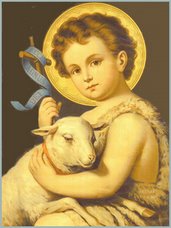
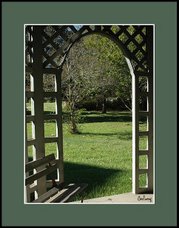
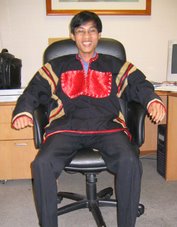

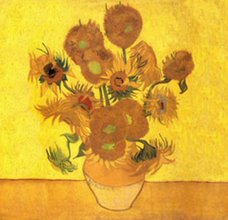
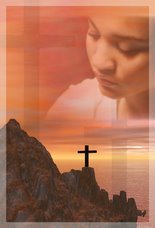

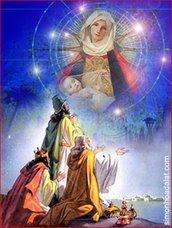
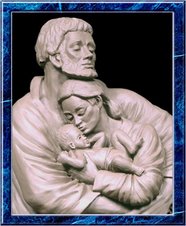

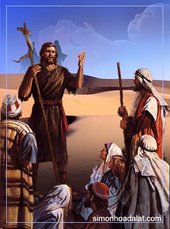
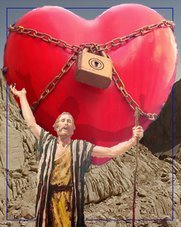
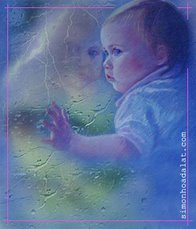


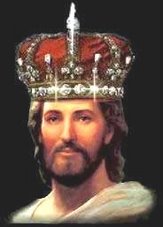
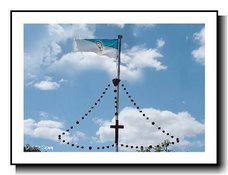
No comments:
Post a Comment